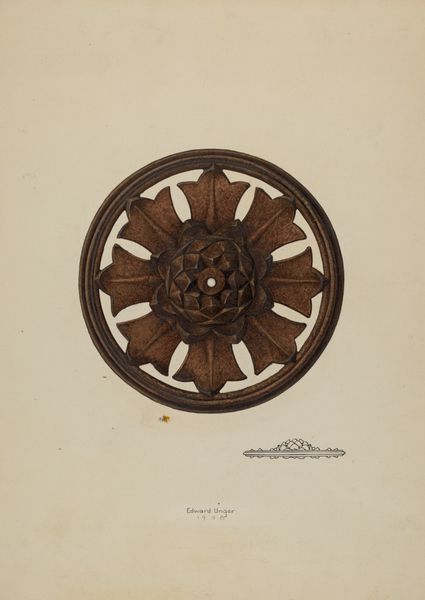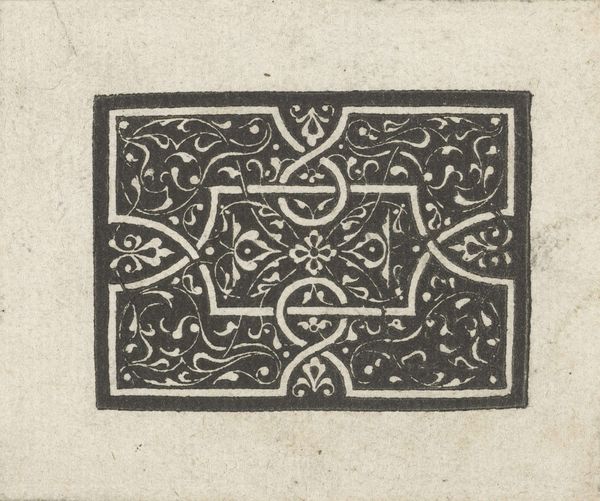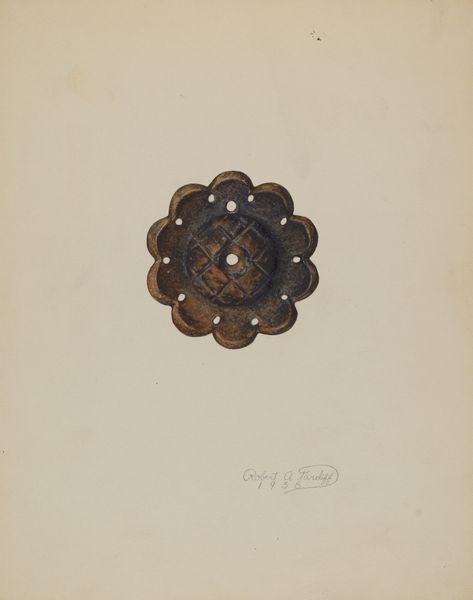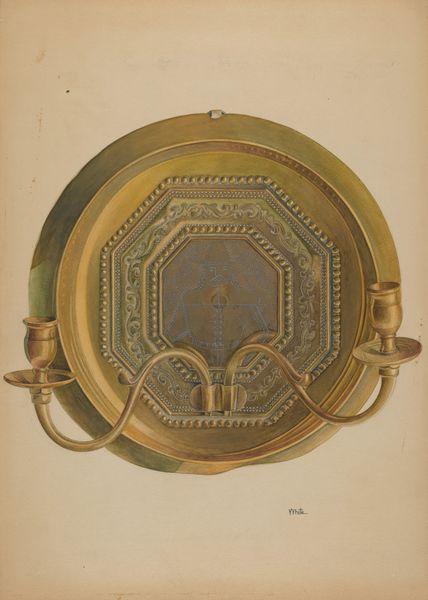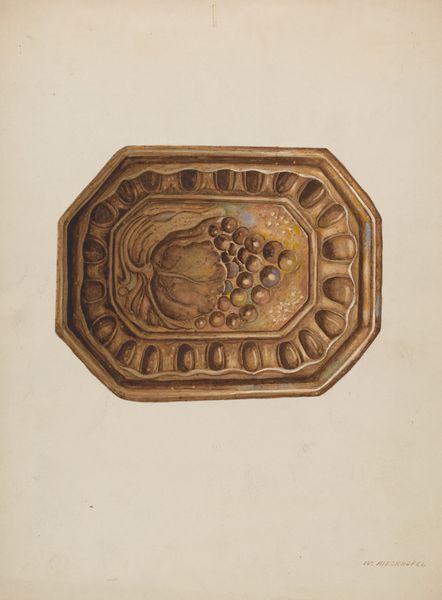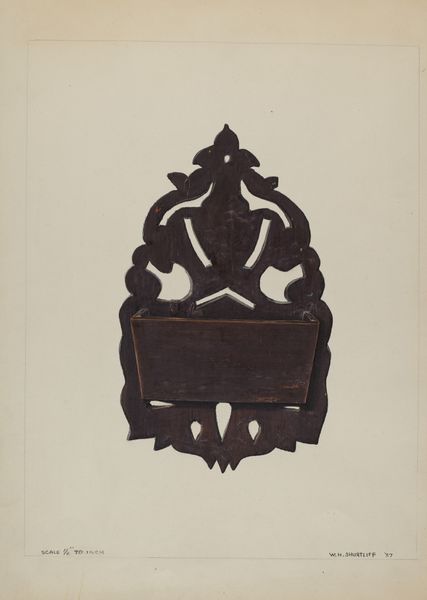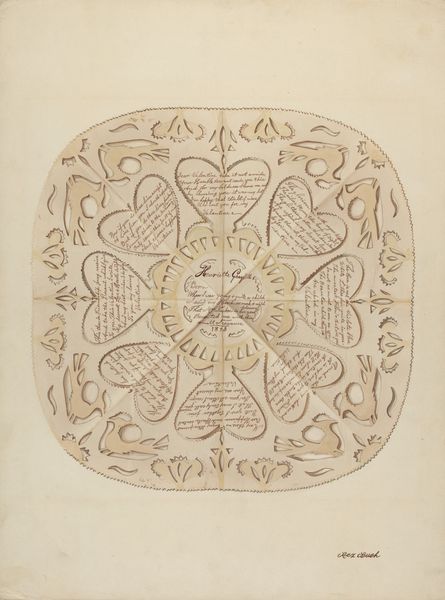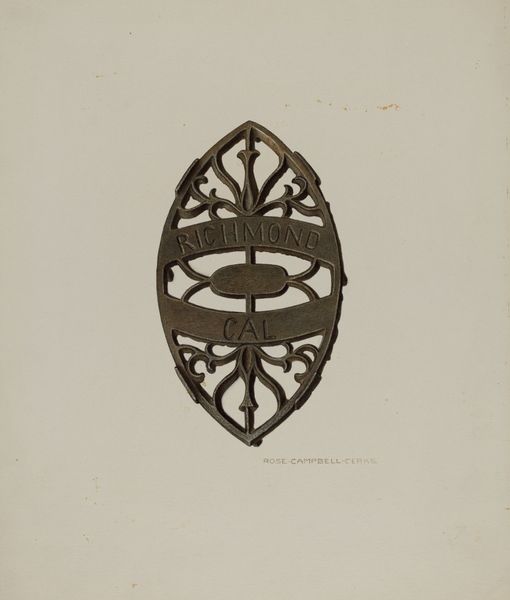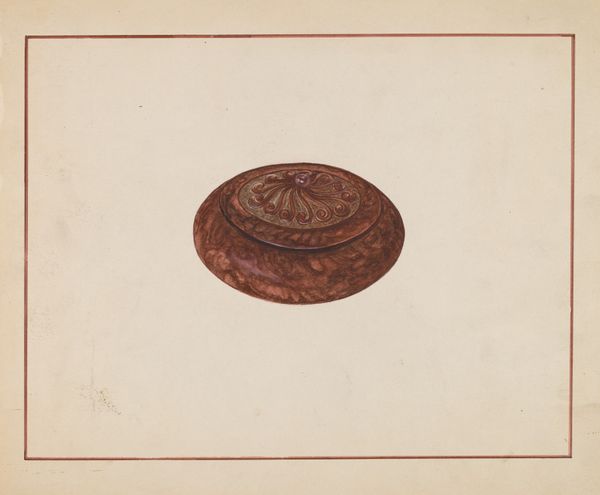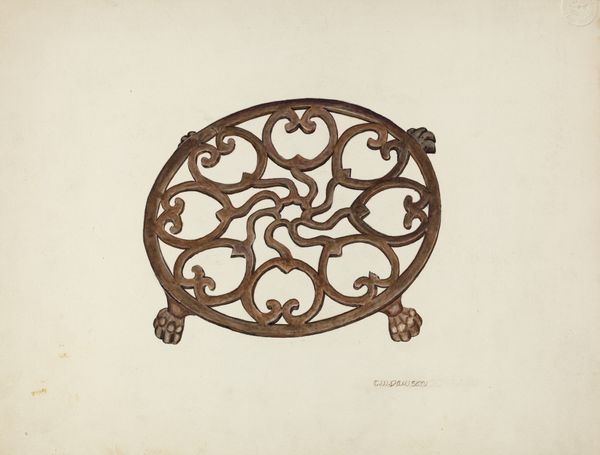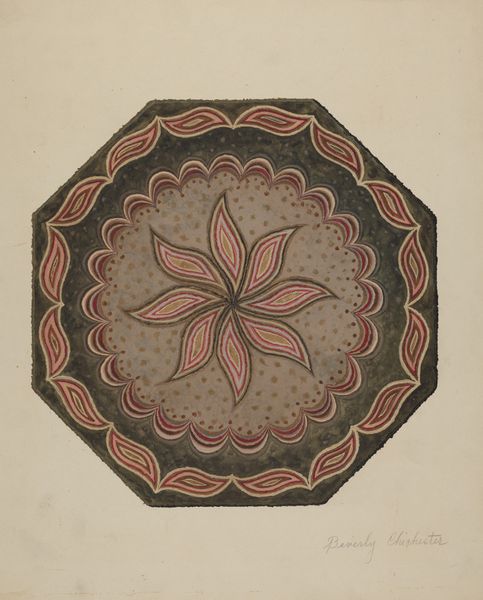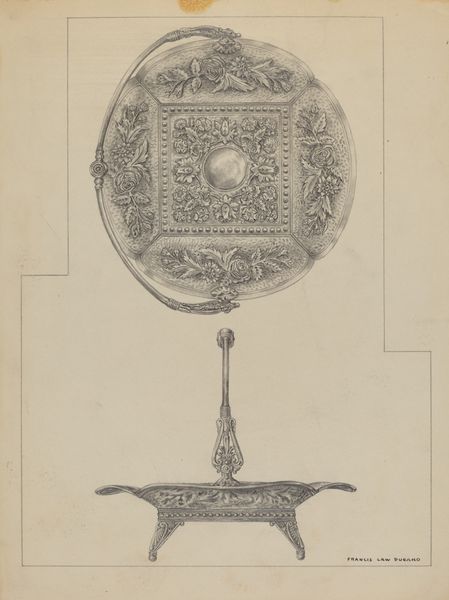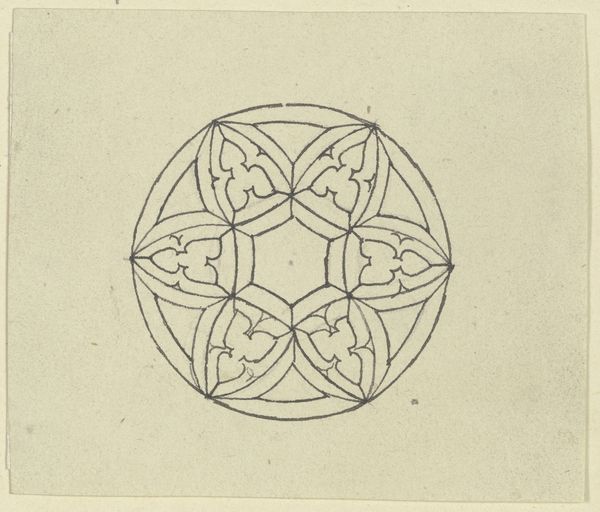
drawing, ornament, watercolor
#
drawing
#
ornament
#
watercolor
#
geometric
#
watercolour illustration
#
academic-art
#
watercolor
Dimensions: overall: 35.5 x 28 cm (14 x 11 in.)
Copyright: National Gallery of Art: CC0 1.0
Curator: Robert Taylor's "Card Tray," likely dating to around 1940. What’s your initial response to this drawing? Editor: I am immediately struck by its subdued elegance. The limited palette creates a sense of aged refinement, and the circular composition centers the ornamental details. It has a calm, meditative quality. Curator: Agreed. We see Taylor utilizing watercolor to render a seemingly mundane object into something worthy of artistic consideration. One wonders what kind of "card" it’s intended to hold and in what context it would be displayed. It invites reflection on the status of craft versus fine art during that period. Editor: Indeed. Looking at the central rosette and the repeating motifs within the design, I note the harmonious balance achieved. Taylor’s skillful use of light and shadow enhances the depth, lending the flat drawing a surprising three-dimensionality. How does the object relate to design movements of its time? Curator: This ornament sits at an interesting crossroads. The repetitive, almost mass-producible aspect aligns it with machine-age aesthetics, yet it's also hand-drawn. Taylor might have been interested in reconciling industrial possibilities with the enduring human desire for the handmade. It also evokes the Victorian love of ornamentation. Editor: Absolutely. It’s this tension that makes the piece so compelling. While geometric, the flowing curves and foliage break away from severe geometric form; what’s most compelling is Taylor’s interplay of restraint and expressiveness. The monochrome and use of light on the layered parts almost evokes the bas-relief sculpture found in architectural details. Curator: Its reproduction of an object we could say served, maybe, both as a kind of domestic engine and silent testament to someone's success or social position within their own time. This piece seems to elevate a mundane consumer object to a symbolic status, reminding us to think about what material traces endure from past decades. Editor: Ultimately, this subtle drawing teaches us to see potential artistic value within unexpected places, finding elegance in simplicity of design while using subdued aesthetic language to echo sculptural, architectonic qualities.
Comments
No comments
Be the first to comment and join the conversation on the ultimate creative platform.
